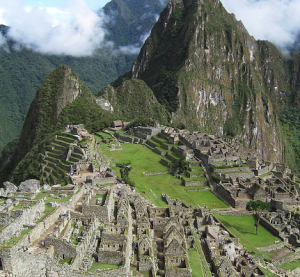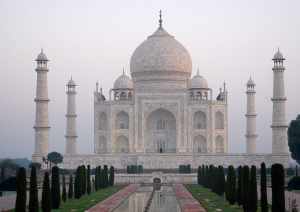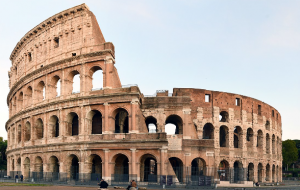New Seven Wonders of the World: Definition, Selection, History, & Significance
Over the course of history, from ancient to contemporary times, human beings and civilizations have built some of the most breathtaking and amazing architectural pieces, statues, and cities reminiscent of the eras they lived in. These structures are so magnificent, filled with rich culture and history, and are so unique that they are named the Wonders of the World.
History of the Wonders of the World
For as long as civilizations have been around, many groups of people have been fascinated with rare and beautiful structures and spent their lives searching and observing some of the world’s best natural and man-made wonders. From as far back as the 5th century BC, Hellenic travelers and scholars depended on lists created by renowned Greek historians like Herodotus and Callimachus of Cyrene to know which ancient sights and wonders to visit. As a result, the initial list was named the “Seven Wonders of the Ancient World”, and these structures were:
- The Great Pyramid of Giza, Egypt
- Colossus of Rhodes, Greece
- Hanging Gardens of Babylon
- Lighthouse of Alexandria, Egypt
- Mausoleum at Halicarnassus, The Achaemenid Empire (modern-day Western Asia)
- Statue of Zeus at Olympia, Greece and
- Temple of Artemis at Ephesus (modern-day Turkey)
Reasons for making a list of the New Seven Wonders of the World

New Seven Wonders of the World – History and Facts
With time, many of these structures fell apart, and by the 20th century, the Great Pyramid of Giza was the only structure standing. Asides that, the initial wonders of the ancient world were not inclusive of other regions worldwide, as they were mostly situated in the Mediterranean and Asian regions. These factors necessitated the need for a more relevant, diverse, and contemporary list.
Selection Criteria
In the year 2000, a Switzerland-based company called The New Seven Wonders Foundation launched a campaign to modify the list of the world wonders. The foundation released a set of rules guiding the selection of the next set of structures:
- They had to have been built before the year 2000
- They had to have been built by humans
- The structures needed to have architectural or artistic value, and
- The structures needed to have been well-preserved.
After over 100 million global votes were cast, the foundation announced the Seven New Wonders of the World in 2007. These were:
- Machu Picchu, Peru
- Chichén Itza, Mexico
- Petra, Jordan
- Taj Mahal, India
- The Colosseum, Italy
- The Great Wall of China
- Christ the Redeemer, Brazil
Not only did these structures meet the foundation’s requirements, but they were also located in various regions worldwide. The Great Pyramid of Giza, the last surviving structure of the first list, received an honorary status.
Machu Picchu

Declared a UNESCO World Heritage Site in 1983, Machu Picchu caught the world’s attention in the second decade of the 20th century when it was re-discovered.
Machu Picchu is perhaps the most famous landmarks of modern-day Peru, as well as one of the finest examples of the excellent structural engineering and craftsmanship of the Incas. This fortified city was built high up in the Peruvian Andes mountains at an elevation of nearly 8,000 feet in the 15th century, which was a period during which the Incas were at the peak of civilization.
According to contemporary archaeologists, Machu Picchu was believed to have been built for the emperor, Pachacuti. The entire structure was built out of dry-stone walls, with some of its notable constructions being the Inhituatana (a ritual stone that the Incas used as a clock and calendar), the Temple of the Sun, and the Room of Three Windows.
Read More: 10 Major Accomplishments of the Inca Civilization
About 300-1000 people, comprising workers and members of Inca’s noble class, lived at Machu Picchu for close to a century before the Spanish embarked on their conquest of South America. When the Spanish arrived, they destroyed several Incan structures and built Catholic churches over them. However, the reason why Machu Picchu exists is because the Spanish never found it! Apart from it being built in a deeply remote region of Peru and shrouded in vegetation, it is believed that the Incas burned down some of its structures and pathways to reduce the city’s visibility.
It wasn’t until the early 1900s that it was accidentally re-discovered by Harvard professor and explorer, Hiram Bingham. In modern times, much of Machu Picchu remains covered in vegetation as a means to protect the structure. The Peruvian government also declared the area a “no-fly” zone to prevent further damage.
Machu Picchu, a UNESCO World Heritage Site, offers some of the most incredible bird’s eye views of much of Southern Peru.
Chichén Itza

In the ancient years, Chichén Itza was a lively city that served as a home to some 35,000 Mayans, located in Yucatán, Mexico. This city is believed to been constructed about over 1,500 years, with settlers first arriving in the area as far back as 540 AD. Some of the earlier structures built included a church, nunnery, and an observatory.
Historians believed that the Itza, also known as foreigners, arrived between 200-300 years and invaded Chichén. The Itzas built El Castillo, a 98 feet tall pyramid. It is believed that the 365 steps on the pyramid reflected the 365 days of the Mayan calendar. However, visitors are not allowed to climb the pyramid. Other notable features of the Chichén Itza include one of the largest sports arenas worldwide, as well as the Temple of Warriors and the Osario Pyramid.
By the time of the Spanish conquest, Chichén had long since been abandoned and many Mayans were living in small towns. Nonetheless, it’s no secret why this city is regarded as one of the Seven Wonders of the World as it has some of the most detailed relics and histories of the Mayan people.
Taj Mahal

Heartbroken by the death of his beloved wife Mumtaz, Emperor Shah Jahan set out to build the world’s greatest tomb in her honor. Construction of mausoleum began in 1632. In 1983, the United Nations designated it as a World Heritage site.
The Taj Mahal is undoubtedly one of India’s most notable landmarks. Located on the right bank of the river Yamuna in the Indian city of Agra, the Taj is also considered as the perfect representation of Indo-Islamic culture and India’s rich history.
This structure was fully constructed in 1648 by Emperor Shah Jahan to honor his wife Mumtaz who passed away (in 1631) while birthing their 14th child. The royal consort is said to have died from postpartum hemorrhage in Burhanpur in the present day Indian state of Madhya Pradesh.
By 1653, building extensions like the mosque, courtyards, and a guest house were also added to the magnificent building.
Along with being known as a symbol of the great love Shah Jahan had for his wife, the Taj Mahal is also a sign of his immense wealth and power. The construction of this landmark is one of the most expensive in history.
At that time of constructing the Taj, it cost about 32 million rupees to build, which could roughly be over $1 billion in modern times. Over 20,000 artisans were employed to construct the Taj Mahal.
Since its construction, the Taj, a UNESCO World Heritage Site, has attracted millions of visitors, including foreign dignitaries like Princess Diana, U.S. President Dwight D. Eisenhower, and former U.S. First Lady Jacqueline Kennedy.
Petra

From 400 B.C. to 106 A.D., the bustling city of Petra served as a trading center and capital of the Nabatean Empire. For many centuries the city remained abandoned until a traveler in the 19th century intruded the area disguised in Bedouin costume. The ancient city is also known as Rose City because of the reddish color of the stones used in construction.
Petra is located in modern-day Jordan and was founded by the Nabateans, who were a group of hard-working Arabs that settled in what is today’s Jordan over 2000 years ago. Back then, Petra was known for its rich culture, stunning stone architectures, and complex irrigation system, a remarkable feat since Petra was constructed in a barren desert.
One of Petra’s most notable features is The Treasury, which famously appeared in Stephen Spielberg’s 1989 blockbuster, “Indiana Jones and the Last Crusade”, which starred Denholm Elliott, Harrison Ford, and Sean Connery.
Petra remained relatively unknown to the world until the Swiss explorer Johann Ludwig Burckhardt re-discovered the city in 1812. It’s no surprise that Petra is Jordan’s most-visited tourist attractions and landmarks, attracting several millions of enthusiastic tourists every year.
Colosseum

In the Roman times, the Colosseum primarily served as an entertainment hub, hosting chariot races, gladiatorial games, and staged reenactments of ancient battles. It was also used to stage important dramas and other theatrical shows. Public executions of prisoners also took place in the Colosseum.
The Colosseum, a large amphitheater built by Emperor Vespasian around 70-72 A.D. is located in Rome, Italy. Vespasian’s son, Emperor Titus, opened the Colosseum in 80 A.D. and its first 100 days included chariot racing, gladiator and animal fights that thrilled the Romans.
Standing imposingly tall at 620 x 513 feet, this structure was easily the largest amphitheater in the Roman Empire. Built out of stone and concrete, it was designed to seat over 50,000 Roman spectators. Most of the gladiators that fought during that period were usually enslaved men, criminals or war prisoners. There were also female gladiators.
The fights at the Colosseum, whether between gladiators, animals, or even animals and gladiators, were gruesome. There were lots of deaths in the years that the structure was active and over 400,000 people and 1,000,000 animals died during that period. Gladiators at that time were taught to learn how to die with honor.
The Romans used the Colosseum for over 400 years, however, its popularity started to decline as other forms of public entertainment were introduced. Over time, about two-thirds of the structure deteriorated due to natural disasters and neglect. Nonetheless, it remains an iconic symbol of Italy and still receives millions of visitors every year.
Great Wall of China

The Great Wall of China is likely to be the world’s best ancient military defense mechanisms of all time. This long and winding wall covers a large expanse of China, from the east to west, starting from Shanhaiguan in Hebei to Jiayuguan in Gansu, making it the world’s largest man-made structure.
The entire structure includes features like watch towers, walls, horse tracks, and fortresses. The length of the wall is 13,170.7 miles, which is half of the earth’s equator!
Before the Great Wall was constructed, many Chinese rulers had already begun building walls to protect their lands from invaders. In 220 B.C., while China was under Emperor Qin Shi Huang, he came up with the idea of uniting all the walls together into one large structure. Over the years, with advanced technologies, the wall was continuously upgraded and fortified with stronger building materials.
Read More: Major Accomplishments of Emperor Qin Shi Huang, the first Emperor of China
Despite the wall’s imposing length, it did not prevent China from getting attacked and invaded. In contemporary times, it has become China’s most famous monument and is open to tourists year-round.
Christ the Redeemer

Christ the Redeemer is the fourth biggest statue of Jesus Christ in the world. The 98-foot-tall monument is located at the peak of Mount Corcovado in Rio de Janeiro, Brazil.
In the 1850s, a priest had the idea to place a monument depicting the Christian faith at the top of Mount Corcovado. He initially sought help from the Brazilian royal family, but the idea was rejected after Brazil was declared a republic in 1889 since the church and state were no longer united.
However, after the First World War, the Roman Catholic Church and other concerned locals placed the statue of Jesus Christ at the summit of the mountain in a bid to increase religious faith in Brazil and bring back many of the locals to Christianity.
At that time, it cost about a quarter of a million USD to construct the statue, and it was funded by the Brazilian Catholic Church. Heitor da Silva Costa, who was an engineer, created the initial sketches while Roman artist, Gheorghe Leonida designed the statue’s face. The massive statue was assembled at the top of Mount Corcovado. As the country’s most popular and iconic cultural landmarks, it continues to be one of Brazil’s biggest tourist sites, as millions of people make their way to the top of Corcovado each year.
Criticisms of the New Seven Wonders of the World
The selection of the New Seven Wonders of the World was met with much criticism and dissenting views. Firstly, its voting method was deemed unscientific, as it allowed people to cast an unlimited number of votes.
The entire campaign also drew up a lot of mixed reactions from different countries, with some of them actively campaigning for votes whereas others remained nonchalant or criticized the entire exercise.
The Egyptian government, for example, heavily criticized the entire challenge and accused The New Seven Wonders Foundation of using the votes for profit. Although the foundation identifies as a non-profit organization, its parent company, New Open World Corporation operates as commercial business entity.
As a result, the United Nations Educational, Scientific, and Cultural Organization (UNESCO), having initially lent their support to the campaign and acting as advisors on nominee selections, decided to pull out, especially since the activity went against its by-laws of ensuring that world heritage sites received equal status.
























